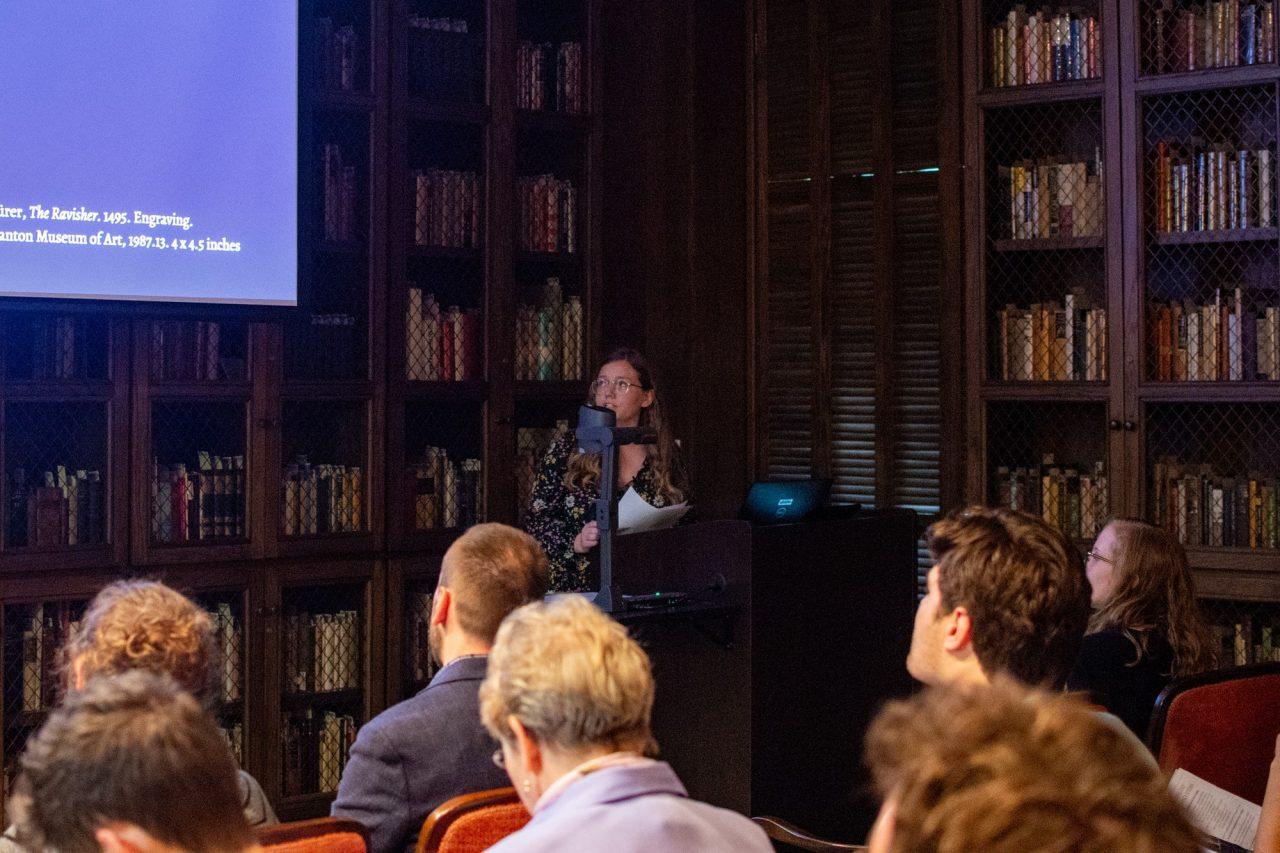Photo by Genevieve Humpreys
The medieval and Renaissance studies program held a colloquium on March 29 for students to present their research and analysis of artworks through the Middle Ages and Renaissance era. Approximately 50 students and staff were in attendance.
The first medieval and Renaissance studies colloquium was held in the spring of 2011 and continued on an annual basis to hear research from students except in 2017 and 2018, when the colloquium was absorbed into the Humanities Undergraduate Research Colloquium.
“The faculty were sitting around and thinking about how interesting our students’ research was, and we decided to launch essentially a mini-academic conference,” said Nicole Marafioti, associate professor of history and co-director of the colloquium. “We’ve decided to strike back on our own this year since we have so much interest in the minor.”
The medieval and Renaissance studies minor draws its core professors from history, English and art history, but the minor includes classes from a total of 14 different departments. Students did not have to be in this minor to present at the colloquium.
Students were chosen to present their research at the colloquium to practice presenting and answering questions. After submitting a research paper and an abstract, the medieval and Renaissance studies faculty judged the applications and chose the presenters. Five students are presenting this year.
“I have never presented an art history paper. This [was] actually my first presentation of a paper that I’ve written,” said senior Elizabeth Day. “It’s actually a good chance for me to get my work out there and share what I’ve learned, because it’s really important that I am able to share it.”
In addition to good practice, student speakers had to first figure out how to adapt their research paper into a presentable product.
“[I’m] definitely gaining more confidence in myself as a researcher and a presenter. When I wrote this paper I had no idea that I’d have the opportunity to present it, so I’m definitely trying to readapt the skills of writing into writing for presentation,” said junior Natalie Curran.
Each student presenter had their own inspiration for researching and presenting on the art that they did. Curran and Day both were able to see the artwork in person.
While studying abroad in London last semester, Curran got to visit her main research piece multiple times. The piece was a Persian painted dish, which inspired her to present on “Chinese Aesthetics in Persia in Fifteenth Century Persian Arts.”
“I actually got to look at the object in person, so that helped me write about it and feel more connected to it,” Curran said. “It wasn’t just some little picture on a screen or in a textbook.”
Day got to visit her print of study in Austin during a school field trip. She was assigned Albrecht Dürer’s “The Ravisher,” and she presented on the illusions of death and sex in the artwork.
“It’s a very weird artwork. I was really excited about the prospect of talking about weird things because people don’t talk about those, so that’s why I really wanted to present this,” Day said.
Although she never was able to see her object of research in person, sophomore Kate Nuelle was inspired simply by the themes of the artwork.
“I was inspired to talk about depictions of Margaret of York and Margaret of Austria as Mary Magdalene because these portraits showed how women developed ways to depict themselves as powerful while remaining within the gender norms of the time,” Nuelle said.
In addition to Day, Curran and Nuelle, sophomore Avani Sastry presented on a Michelangelo piece from a Machiavelllian perspective, and senior Natalie Carrier presented on the “Representations of Children in Northern Renaissance Art.”
Opportunities like this colloquium are important for sharing information about the past, according to Day.
“I’ve done all this work, I’ve researched for however long, but nobody knows. This is a small hidden part of the 1400s that nobody is thinking about anymore and nobody is trying to find. The only way it’s going to be found is if I talk about it today. That’s why these colloquiums are really important, so people can learn about these things in new and modern ways,” Day said.







